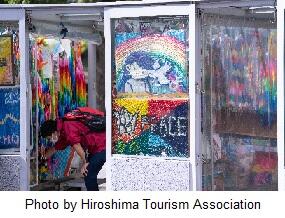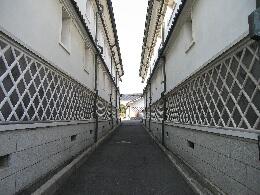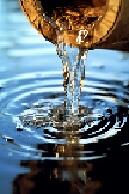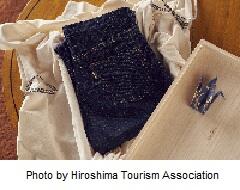JOMC Newsletter
Sustaining the Future of Hiroshima's Traditions and Ecology
In May, the G7 Summit 2023 was hosted in the city of Hiroshima. Many visitors to Hiroshima came because of its history, as the site of a nuclear bombing that claimed tens of thousands of civilian lives during WW2 and changed the world forever. The G7 Summit is also about changing the world, but this time with eyes fixed firmly on the future. Topics discussed during the summit include global economic resilience and security and progress toward the 2030 Agenda for Sustainable Development Goals. As international tourism seeks a new normal, both world economic stability and sustainable tourism play vital roles in determining what that future will look like.
Hiroshima was perhaps a natural choice for the G7 Summit, with its solemn history from WW2 and its forward-thinking goals toward a sustainable future. Even age-old traditions in origami, textile manufacturing, and sake brewing are playing key roles in the sustainable tourism movement of Hiroshima.
The primary attraction in Hiroshima is the Peace Memorial Park and Museum. The beautifully manicured 120,000 square meter park's broad, mostly flat landscape still allows visitors to imagine the force of the atomic explosion that leveled nearly every structure in its blast zone. The twisted remnants of the A-Bomb Dome, now a UNESCO World Heritage Site, represent the horrors war inflicts on humankind.
Orizuru- Praying for Peace in a Sustainable Cycle of Origami Cranes
 The classic Japanese origami crane has come to be a symbol of peace, especially when many are gathered together. At the Peace Memorial Park, visitors can see countless paper curtains of these colorful orizuru adorning walls and monuments, many made of folded cranes that have been sent by well-wishers from around the world. As about 10 million of these cranes are donated each year to the Peace Memorial Park, the ORIZURU PROJECT recycles them into fresh origami paper that is distributed to schools, where children can fold these sheets again into new origami cranes in a sustainable cycle of renewed prayers for peace.
The classic Japanese origami crane has come to be a symbol of peace, especially when many are gathered together. At the Peace Memorial Park, visitors can see countless paper curtains of these colorful orizuru adorning walls and monuments, many made of folded cranes that have been sent by well-wishers from around the world. As about 10 million of these cranes are donated each year to the Peace Memorial Park, the ORIZURU PROJECT recycles them into fresh origami paper that is distributed to schools, where children can fold these sheets again into new origami cranes in a sustainable cycle of renewed prayers for peace.
Saijo Sake - Protecting the Future of Hiroshima Sake Production

In a mountain valley east of Hiroshima is Saijo, said to be one of the three most famous sake-producing areas in Japan. Sake production can be traced back to the mid-17th century, and breweries that have been operating for over a century line the scenic streets here, continuing to produce award-winning sake year
after year.
For those who love sake or simply wish to experience a traditional Japanese craft, Saijo is a perfect day trip from Hiroshima city. Visitors arrive by train and enjoy sake tasting as they walk from brewery to brewery through the well-preserved neighborhoods of Japan's Edo era.
Producing high-quality sake is based on the purity of its two main ingredients: rice and water. The local wells are famous for their soft, mellow-flavored water, and the finest water comes from just a narrow strip of land flowing beneath the ground where most of Saijo's breweries are located.
The breweries know the water is the lifeblood of their business, and they do not make light of their responsibility to keep the waters of Saijo pure. To that end, each brewery donates a small fee for every 1.8 liters of sake sold. The fee supports a group of local volunteers who go into the Ryuo mountains several times each year to clean, gather wood, and make charcoal used to purify the water.
BoleeGa Fukuyama - Taking Sustainable Fashion To A New Level of Luxury
Fukuyama is a city in Hiroshima Prefecture synonymous with denim production. The entire production process for making jeans can be completed at workshops located within a 20-kilometer radius, making Fukuyama the perfect location for the ultimate fashion experience - creating and producing a one-of-a kind pair of denim jeans.

This 5-day travel experience is centered around the production process of a custom pair of denim jeans, from the natural indigo dyeing process to the design
and fitting, and finally, the presentation of the finished product in a luxurious wooden box. Guided tours of each production facility are included in the trip, and many hands-on experiences with the textiles. During the production waiting period, guests are encouraged to explore the beautiful towns and scenery of the Setouchi Inland Sea.
Although the experience isn't inexpensive, the profits go to a good cause, including a contribution to help sustain the local textile industry. BoleeGa isn't for the
masses but for fashion connoisseurs who have a deep interest in how their clothes are made and want an experience, and pair of jeans, to last a lifetime.
As the members of the G7 countries discuss plans and policies towards achieving the goals of the 2030 agenda and SDGs, Hiroshima is already well along the road to creating tourist experiences that support SDGs and help visitors to Japan create unique memories of their trip to Hiroshima Prefecture.
